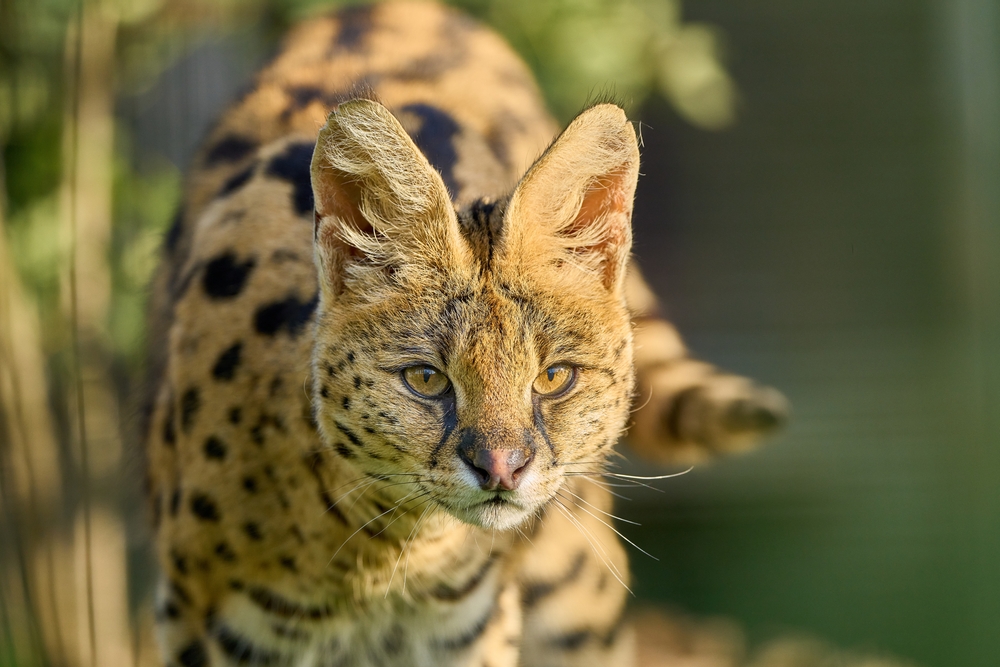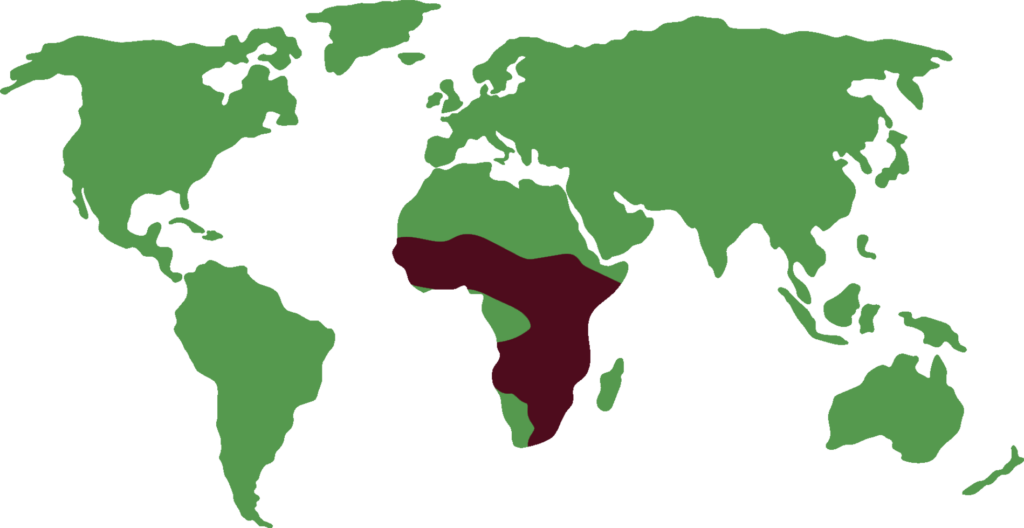SERVAL
Leptailurus serval

Length

1 m
weight

10 kg
Lifespan

20 years
The serval is a species of carnivorous mammal of the family Felidae (commonly called felid or feline) native to Africa.
General characteristics
The serval is a slender, medium-sized feline with a body length of 60-100cm and a tail length of approximately 30cm.
It is characterised by a small head, large ears and a golden yellow coat with black spots and stripes. Behind its ears it has markings called “ocelli”, which are used to scare off predators. They have excellent hearing with which they can detect and locate prey hidden in vegetation.
They have longer legs than any other feline relative to their body size and allow them to see better in tall grass prairies.
Feeding
It is a carnivorous animal that feeds on rodents, small birds, frogs, insects, reptiles and small mammals.
Behaviour
Servals are solitary and nocturnal, hunting mostly at night unless disturbed by human activity or the presence of larger nocturnal predators. During the day, they rest in the shade of bushes.
They are territorial and mark their territory with urine and scratches on trees. Each individual occupies a relatively large territory and may overlap with the territories of other servals of the same sex.
Reproduction
The serval’s mating season lasts up to four days. It may give birth to several litters throughout the year, but usually does so only if the previous litters die shortly after birth.
Gestation lasts 66 to 77 days and usually two pups are born, although there may be up to four.
The offsprings are born blind and helpless, with a greyish woolly coat. They open their eyes at about 10 days of age and at six months their permanent canines emerge, so they begin to hunt on their own. After the age of one year, they are separated from their mother.
Threats
They are occasionally hunted by leopards and much more frequently by man, as their skins are considered very valuable throughout Africa.
Distribution
It is found throughout the African continent with the exception of desert areas and much of South Africa.
It is abundant in scrubland areas, although it is also present in savannahs, forests and semi-deserts.

Did you know?
They can jump vertically up to three metres high.
The spotted pattern of its coat serves as camouflage in the wild.
Although they are terrestrial felines, they are excellent swimmers and can chase aquatic prey in water if necessary.
Conservation status
